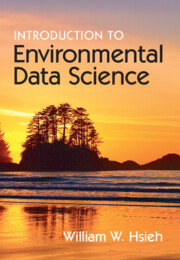Book contents
- Frontmatter
- Contents
- Preface
- Notation Used
- Abbreviations
- 1 Introduction
- 2 Basics
- 3 Probability Distributions
- 4 Statistical Inference
- 5 Linear Regression
- 6 Neural Networks
- 7 Non-linear Optimization
- 8 Learning and Generalization
- 9 Principal Components and Canonical Correlation
- 10 Unsupervised Learning
- 11 Time Series
- 12 Classification
- 13 Kernel Methods
- 14 Decision Trees, Random Forests and Boosting
- 15 Deep Learning
- 16 Forecast Verification and Post-processing
- 17 Merging of Machine Learning and Physics
- Appendices
- References
- Index
14 - Decision Trees, Random Forests and Boosting
Published online by Cambridge University Press: 23 March 2023
- Frontmatter
- Contents
- Preface
- Notation Used
- Abbreviations
- 1 Introduction
- 2 Basics
- 3 Probability Distributions
- 4 Statistical Inference
- 5 Linear Regression
- 6 Neural Networks
- 7 Non-linear Optimization
- 8 Learning and Generalization
- 9 Principal Components and Canonical Correlation
- 10 Unsupervised Learning
- 11 Time Series
- 12 Classification
- 13 Kernel Methods
- 14 Decision Trees, Random Forests and Boosting
- 15 Deep Learning
- 16 Forecast Verification and Post-processing
- 17 Merging of Machine Learning and Physics
- Appendices
- References
- Index
Summary
A decision tree is a tree-like model of decisions and their consequences, with classification and regression tree (CART) being the most commonly used. Being simple models, decision trees are considered ’weak learners’ relative to more complex and more accurate models. By using a large ensemble of weak learners, methods such as random forest can compete well against strong learners such as neural networks. An alternative to random forest is boosting. While random forest constructs all the trees independently, boosting constructs one tree at a time. At each step, boosting tries to a build a weak learner that improves on the previous one.
Information
- Type
- Chapter
- Information
- Introduction to Environmental Data Science , pp. 473 - 493Publisher: Cambridge University PressPrint publication year: 2023
Accessibility standard: Unknown
Why this information is here
This section outlines the accessibility features of this content - including support for screen readers, full keyboard navigation and high-contrast display options. This may not be relevant for you.Accessibility Information
- 3
- Cited by
